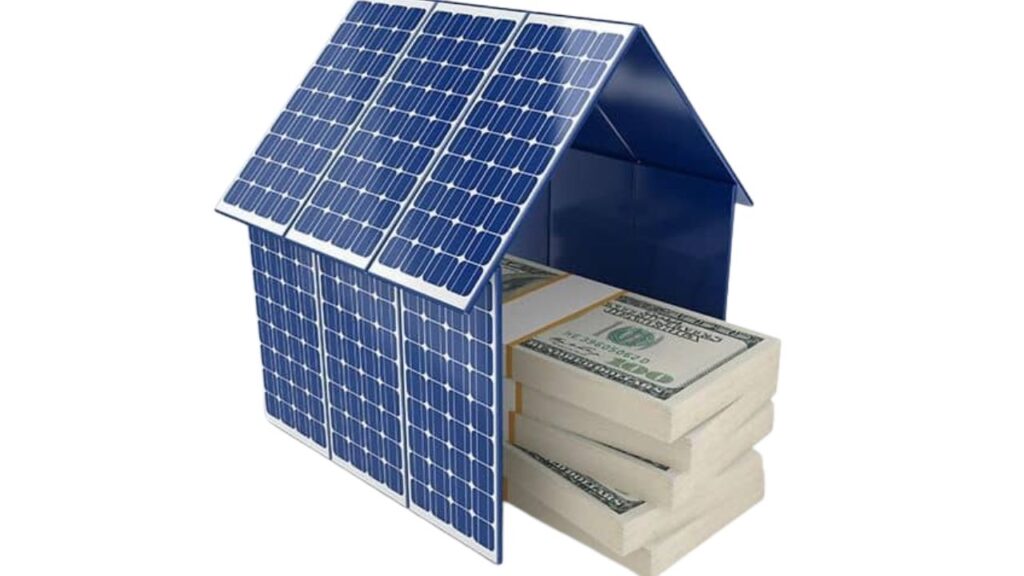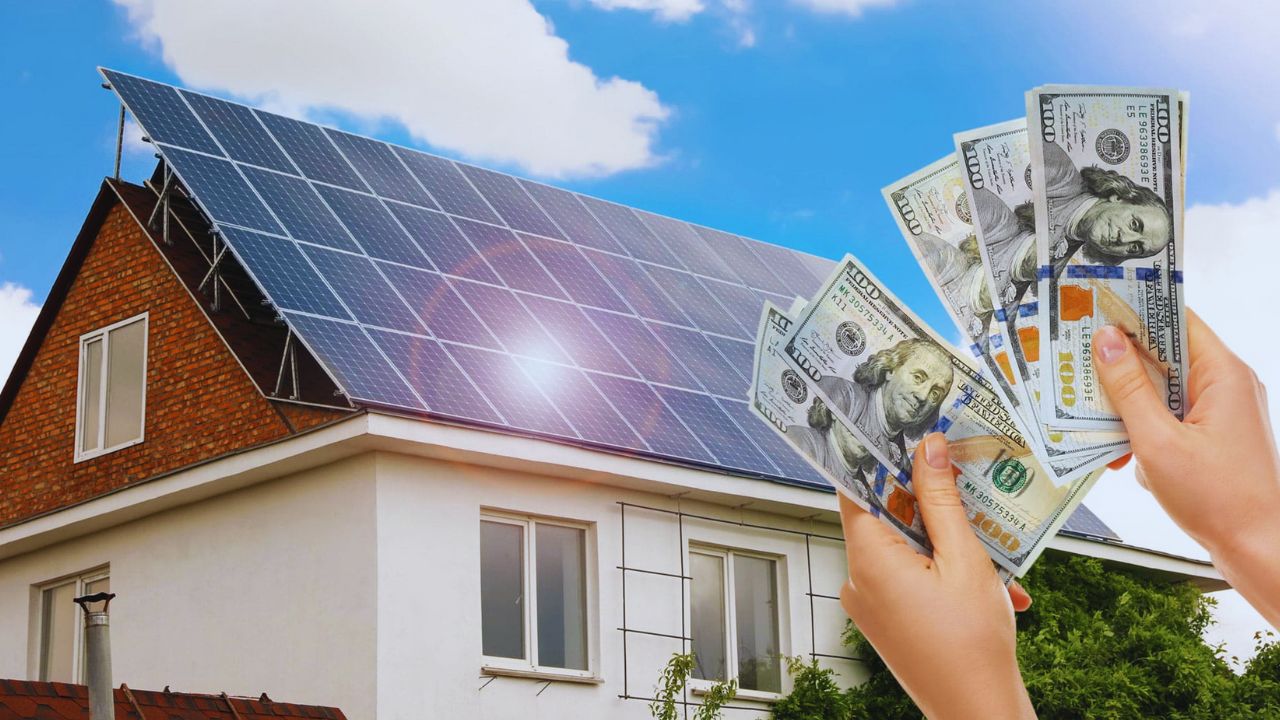Solar Financing for Homeowners: For many homeowners, switching to solar power is no longer just an environmentally responsible choice—it’s a smart financial move. Rising electricity costs, frequent grid outages, climate concerns, and long-term savings are driving more families toward rooftop solar systems. However, the biggest question most homeowners ask is: “How do I afford it?”
This is where solar financing becomes a game-changer. The solar industry has evolved far beyond simple cash purchases. Today, homeowners can choose from loans, leases, power purchase agreements (PPAs), property-linked financing, and even hybrid models that combine solar power with battery storage.
This comprehensive guide takes a deep dive into how solar financing works, the options available in 2025, and how homeowners can choose the right method to maximize savings and minimize risk.
Why Solar Financing Matters More Than Ever
The upfront cost of a home solar system—including panels, inverter, wiring, and installation—can range from $12,000 to $40,000, depending on size and battery storage needs. Even though prices have dropped significantly over the last decade, it’s understandable that most families don’t want to pay the full amount upfront.
Financing solves this problem by allowing homeowners to:

- Spread the cost over many years
- Start saving on electricity from day one
- Access solar without draining savings
- Combine incentives and rebates with flexible payment plans
- Boost home value while lowering long-term energy costs
As electricity prices continue rising, solar financing acts like a shield, offering predictable monthly payments and long-term savings.
Read Also: Solar Panel Installation Near Me in Chennai
The Growing Shift Toward Solar Ownership
While leasing solar systems was popular a decade ago, the trend has rapidly shifted toward ownership—both through cash purchases and loans. Owning your solar system means you benefit from:
- Federal tax credits
- State rebates
- Increased home value
- Higher lifetime savings
This shift has pushed manufacturers, banks, and clean-energy lenders to create more flexible, homeowner-friendly financing products.
Let’s explore each option in depth.
Cash Purchase — The Highest Return for Those Who Can Afford It
Paying cash remains the simplest and most financially rewarding way to go solar.
Why Cash Is Powerful
- No interest payments
- No long-term contracts
- You own the system outright
- Highest lifetime savings
- You qualify for all incentives, including the 30% federal tax credit
- Best impact on home resale value
Who Should Consider Cash?
- Homeowners with savings specifically set aside for home upgrades
- Families earning enough to benefit fully from tax credits
- People planning to live in the home for 10+ years
The downside? You need a large upfront amount, which isn’t realistic for everyone. For these homeowners, solar loans are a more flexible alternative.
Solar Loans — The Most Popular Choice in 2025
Solar loans have revolutionized the rooftop solar industry. They make solar accessible without heavy upfront costs while still giving homeowners system ownership.
How Solar Loans Work
A lender pays the installer directly, and the homeowner repays the loan through monthly installments. These loans often include:
- Fixed interest rates
- Terms ranging from 5–25 years
- Zero-down options
- No prepayment penalties (installer-dependent)
- Lower monthly payments than the average electric bill
Two Main Types of Solar Loans
A. Unsecured Solar Loans
- No home collateral
- Slightly higher interest rates
- Quick approval with minimal paperwork
B. Secured Loans (Home Equity Loans / HELOCs)
- Lower interest rates
- Uses your home as collateral
- Good for homeowners with strong credit and equity
Benefits of Solar Loans
- You own the system
- You qualify for the 30% federal tax credit
- Monthly expenses may be lower than current electricity bills
- Flexible terms and lender competition means better deals
Drawbacks
- Interest increases total system cost
- Missed payments affect credit
- Loan terms can be long if you choose low monthly payments
For most homeowners, solar loans strike the ideal balance between affordability and ownership.
Home Equity Loans & HELOCs — Best for Low-Interest, Long-Term Borrowing
For homeowners with good equity, using a home equity loan or a HELOC to finance solar installation can dramatically reduce borrowing costs.
Differences Between the Two
Home Equity Loan
- Fixed interest
- Fixed monthly payment
- Predictable over time
HELOC (Home Equity Line of Credit)
- Variable interest
- Flexible borrowing
- Ideal for phased upgrades like solar + later battery installation
Advantages
- Lower interest rates than other loan types
- Tax benefits in certain cases (consult a tax advisor)
- You still own the system and claim all incentives
Risks
- Your home is collateral
- HELOC rates can rise
- Longer approval time
This option works best for financially stable homeowners with available equity who want the lowest borrowing cost.
PACE Financing — Property-Linked Solar Financing
PACE (Property Assessed Clean Energy) financing attaches solar payments to your property tax bill. Instead of borrowing like a traditional loan, you agree to an annual property tax assessment for 10–25 years.
Advantages of PACE
- No upfront payment
- Approval depends on property equity, not credit score
- Long repayment terms mean lower monthly cost
- Payments stay with the property if you sell it (depending on state rules)
Disadvantages
- Limited availability
- Higher administrative fees
- Some mortgage lenders may require payoff before home sale or refinance
- Terms vary widely by region
PACE financing works best for homeowners who may not qualify for standard loans but still want to own their solar system.
Solar Leases — Zero Upfront Cost, But Lower Long-Term Savings
In a solar lease, a solar company installs panels on your roof, and you pay a fixed monthly fee to “rent” the system.
Advantages
- No large upfront cost
- Maintenance is handled by the solar company
- Easy approval process
Disadvantages
- You do not own the system
- No federal tax credit for the homeowner
- Home resale can be complicated
- Monthly rates often escalate over time
Leases are attractive for homeowners who want solar quickly with minimal financial requirements, but ownership-based options provide much better long-term savings.
Power Purchase Agreements (PPAs) — Pay Only for the Solar Electricity You Use
PPAs are similar to leases but with one key difference: instead of paying a fixed rental fee, you pay a per-kWh rate for the electricity the solar system produces.
Advantages
- No installation cost
- Lower electric bills than utility power
- Maintenance included
- No responsibility for system performance
Disadvantages
- You don’t own the system
- You don’t qualify for tax incentives
- Long-term savings are lower
- Contracts often include annual price increases
PPAs are ideal for homeowners who simply want cheaper electricity and no ownership responsibilities. But financially, ownership still wins.
Solar + Battery Financing — A Growing Trend in 2025
With blackouts and extreme weather events increasing, many homeowners are opting for solar systems combined with battery storage. The 30% federal tax credit applies to both solar panels and qualifying batteries, significantly reducing total cost.
Why Batteries Are Popular
- Backup power during outages
- Night-time solar energy usage
- Lower bills in areas with time-of-use billing
- Greater energy independence
Financing Options for Batteries
- Bundled into solar loans
- HELOC or home equity loan
- Cash purchase
- PACE programs (in eligible areas)
Battery systems do raise upfront cost, but when financed correctly, they offer tremendous value, especially in states with unstable grids.
How to Choose the Best Solar Financing Option
Here’s a practical way to choose:
If You Want the Lowest Total Cost:
✔ Cash purchase
✔ Short-term solar loan
✔ Home equity loan
If You Want the Lowest Monthly Payment:
✔ PACE financing
✔ Long-term solar loan
✔ Lease or PPA
If You Want the Highest Long-Term ROI:
✔ Cash or solar loan
✔ Add battery storage if outages are common
If You Have Poor Credit:
✔ PACE financing
✔ Lease or PPA
✔ Co-applicant solar loan
If You Plan to Move in 3–8 Years:
✔ Cash or loan (system adds home value)
✘ Avoid long-term leases and PPAs
Choosing the right financing depends on your cash flow, credit, home equity, and long-term plans.
Practical Tips to Avoid Mistakes When Financing Solar
Many homeowners feel overwhelmed by the number of options. These simple guidelines ensure you’re making a solid financial decision:
✔ Compare at least 3 installer quotes
Prices vary widely even within the same city.
✔ Don’t choose based on the lowest monthly payment alone
Lower monthly payments often mean higher lifetime interest.
✔ Always ask about prepayment penalties
Some loans penalize early payoff.
✔ Review utility interconnection rules
Some utilities have limits on solar system size or net metering credits.
✔ Ensure warranty details are clearly written
Panels should have a 20–25 year warranty and inverters at least 10–12 years.
✔ Ask for a performance estimate
Understand how much electricity your system is guaranteed to generate.
✔ Keep all documents for tax filing
You’ll need them when claiming your federal solar tax credit.
Understanding the True Cost of Solar (With Financing)
To make an informed decision, it’s important to understand the total cost over time. Many homeowners compare only the installation price, but the financial outcome depends on all these factors:
- Loan term
- Interest rate
- Down payment
- Tax credits
- Local rebates
- Electricity rate inflation
- Net metering policies
- Battery add-ons
The best way to evaluate your financing option is to calculate:
Net System Cost = Total Cost – Incentives – Bill Savings
Most homeowners find that, even with financing, their solar payments + leftover electric bill still cost less than their old utility bill.
Read Also: Smart Cities & Solar Missions: How India’s Urban Projects Are Going Fully Green
Will Solar Increase My Home’s Value?
Yes—multiple housing studies show that homes with solar systems are more appealing to buyers and often sell faster. Owned systems add the most value.
Solar increases resale value when:
- The system is fully owned
- Warranties transfer to the new owner
- Electric bills are significantly reduced
- The system is relatively new
In contrast, leased systems may require contract transfers, which some buyers find complicated.
The Future of Solar Financing (2025 and Beyond)
Solar financing continues to evolve rapidly:
Expected trends:
- More lenders offering zero-down options
- Longer loan terms (up to 30 years)
- Utility-driven solar subscription programs
- Increased incentives for solar batteries
- AI-powered energy monitoring
- Federal and state push toward clean-energy adoption
As solar becomes mainstream, financing options will continue expanding, making clean energy more accessible to everyone.
Final Thoughts: Which Solar Financing Option Is Right for You?
There is no single “best” financing method for every homeowner. The right choice depends on your financial situation, long-term plans, and energy goals.
Best Overall (Most Homeowners):
👉 Solar loan with a reasonable term and fixed rate
Best for Maximum Savings:
👉 Cash purchase
Best for Low Income or Poor Credit:
👉 PACE financing or a solar lease/PPA
Best for Homes Facing Frequent Power Cuts:
👉 Solar + battery with loan financing
No matter which route you take, financing makes solar power accessible, affordable, and financially smarter than ever before. With the right plan, you can enjoy lower electric bills, increased home value, backup power security, and a greener lifestyle—all with minimal financial strain.
